Free-range Poultry On Half A Hectare
At Le Bosquet, Pont-Farcy, Normandy, France
Some notes:
We have kept a large variety of chickens, ducks, geese and guinea-fowl, free-range, on a half hectare plot at Le Boquet since 2003. While this sort of space is not available to everyone, it is an ideal way of producing high quality, low-cost meat and eggs. We are sharing the following information with others interested in growing or breeding their own poultry.
By Christopher Long
See the author's version of a mobile chicken or duck 'house', suitable for rearing young birds. This poultry cage was also specifically designed as a temporary or seasonal coop for laying chickens.
-
 MIXING HENS WITH GEESE: Keeping hens in the same enclosure as geese and ducks does not work. We found the hens stopped laying and the cocks became so intimidated that they literally became 'crest-fallen'. At least one cock gave up the will to live altogether. It seems they can co-exist in a large free-range environment provided they can get away from each other and have separate housing.
MIXING HENS WITH GEESE: Keeping hens in the same enclosure as geese and ducks does not work. We found the hens stopped laying and the cocks became so intimidated that they literally became 'crest-fallen'. At least one cock gave up the will to live altogether. It seems they can co-exist in a large free-range environment provided they can get away from each other and have separate housing.
- RELUCTANT MOTHERS: Many of the hens bought in markets in Normandy have now lost the instinct to go broody. This phenomenon probably exists elsewhere in Europe and is no doubt due to the effects of factory farming over many generations.
Of the 30-40 laying hens we've bought in markets over the past ten years, only three have ever gone broody – two of which went on to produce chicks. Of course the dozens we've fattened for the pot never lived long enough to take the test! Our bantams, on the other hand, go broody easily and often and make good mothers. While it's sad that many larger domestic hens are losing the instinct to reproduce, this must of course be good news for poultry sellers.
So, anyone wanting hens in order to produce chicks would be well-advised either to buy from someone whose hens have a good track record as 'sitters', or to place fertile eggs from non-broody hens under a willing bantam.
-
 HOUSING: Our main chicken house is a ramshackle old sheep byre (about 5 x 2 metres) with clap-board sides, a corrugated iron roof and an earth floor. This satisfies two important requirements: plenty of ventilation though narrow gaps in the timber sides and a floor that retains warmth in even the coldest of winters.
HOUSING: Our main chicken house is a ramshackle old sheep byre (about 5 x 2 metres) with clap-board sides, a corrugated iron roof and an earth floor. This satisfies two important requirements: plenty of ventilation though narrow gaps in the timber sides and a floor that retains warmth in even the coldest of winters.
This large space could easily house a dozen or more hens although we seldom have more than six laying hens and perhaps another six cockerels being fattened for the pot, plus an adult cock to fertilise the eggs. However, a large chicken shed like this means that we can shut them away with food and water for several days when we're on holiday. Within this space are three low-level nesting boxes (about 50 cm off the ground which they refuse to use) and two more about 150 cm off the ground. Perversely, all the hens queue up to use just one of these two high-level boxes.

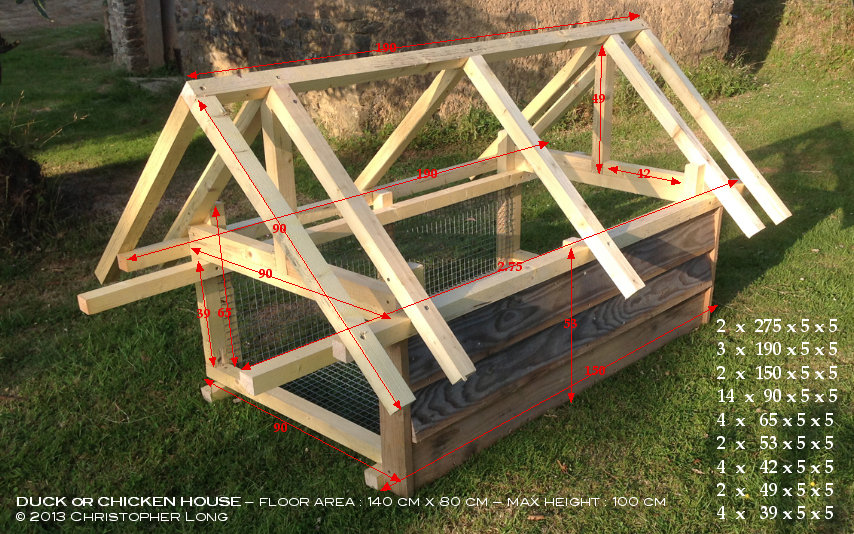 The first priority is to ensure that the building is secure against foxes and other predators (see below) and secondly, to reduce problems with vermin, to avoid whenever possible storing food or giving it to chickens where they live.
The first priority is to ensure that the building is secure against foxes and other predators (see below) and secondly, to reduce problems with vermin, to avoid whenever possible storing food or giving it to chickens where they live.

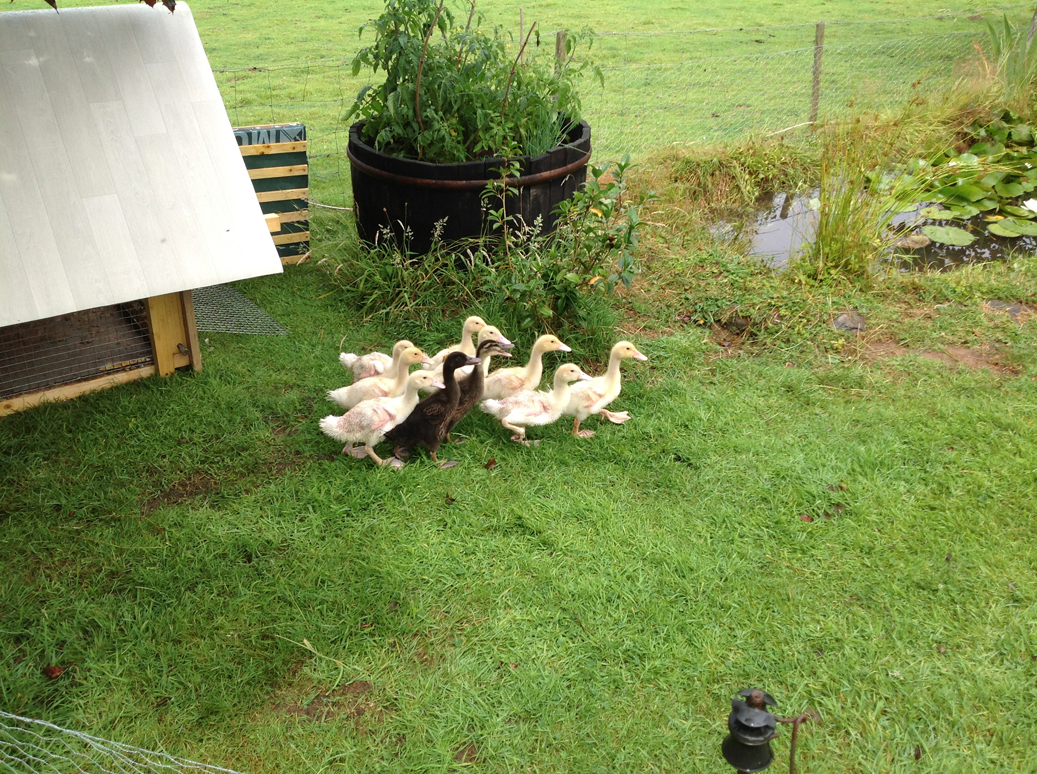 For this reason, we release the hens in the morning, feed them their ration of wheat grain well away from where they live and store the food in steel, rat-proof oil drums in area which is permanently patrolled by our cat.
For this reason, we release the hens in the morning, feed them their ration of wheat grain well away from where they live and store the food in steel, rat-proof oil drums in area which is permanently patrolled by our cat.
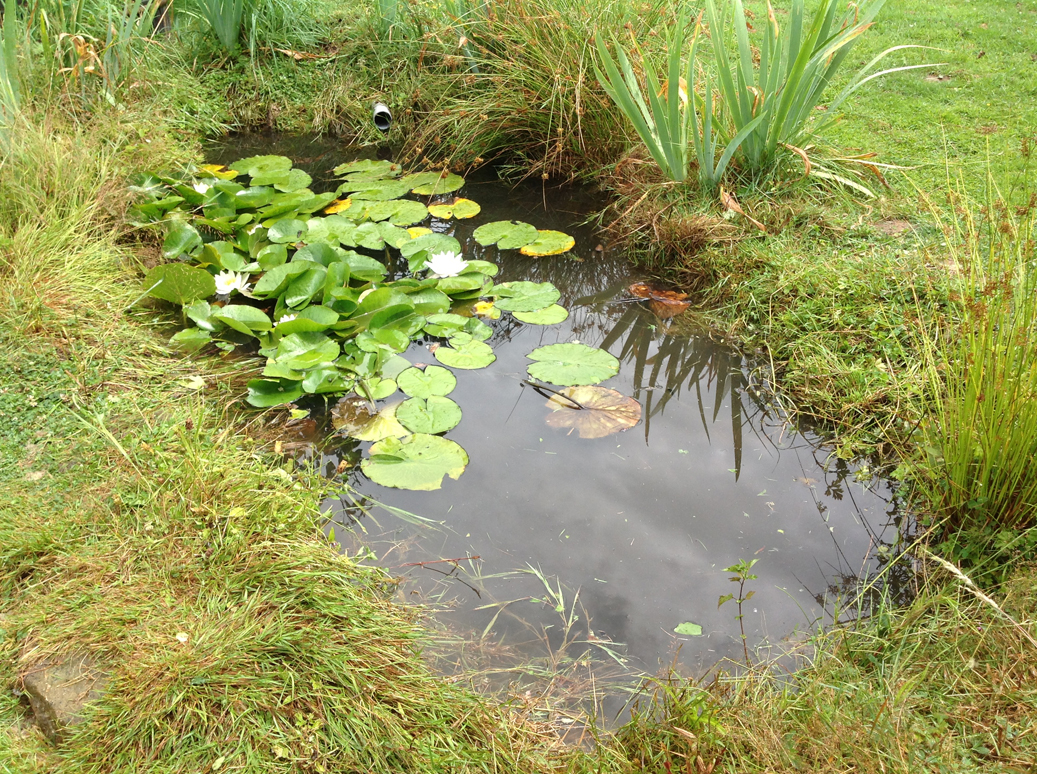
 We now also have a portable poultry house which we use for raising young chickens and ducks. It's a permanent home to our ducks, beside a pond, but is useful as a thoroughly secure unit in which to rear newly fledged chick under a heat lamp.
We now also have a portable poultry house which we use for raising young chickens and ducks. It's a permanent home to our ducks, beside a pond, but is useful as a thoroughly secure unit in which to rear newly fledged chick under a heat lamp.
 This poultry house is also fitted out with two nesting boxes in case one wants to guarantee pure breeding. It uses drip-feed systems for both food and water and is entirely lined with rat-proof galvanised grills.
This poultry house is also fitted out with two nesting boxes in case one wants to guarantee pure breeding. It uses drip-feed systems for both food and water and is entirely lined with rat-proof galvanised grills.
- ADOPTION: Following on from the last point, hens are opportunistic when it comes to reproduction. If one hen (or bantam) is broody, her friends will often try to lay eggs beside her, calculating that she will take these alien eggs 'under her wing' to be hatched and raised as if they were her own. This is good reproductive strategy on the part of the real parents since their genes will survive despite their eggs having been given up for adoption! Needless to say, poultry breeders too can make good use of this mechanism and place fertile hens' eggs for incubation by another hen or bantam.
-
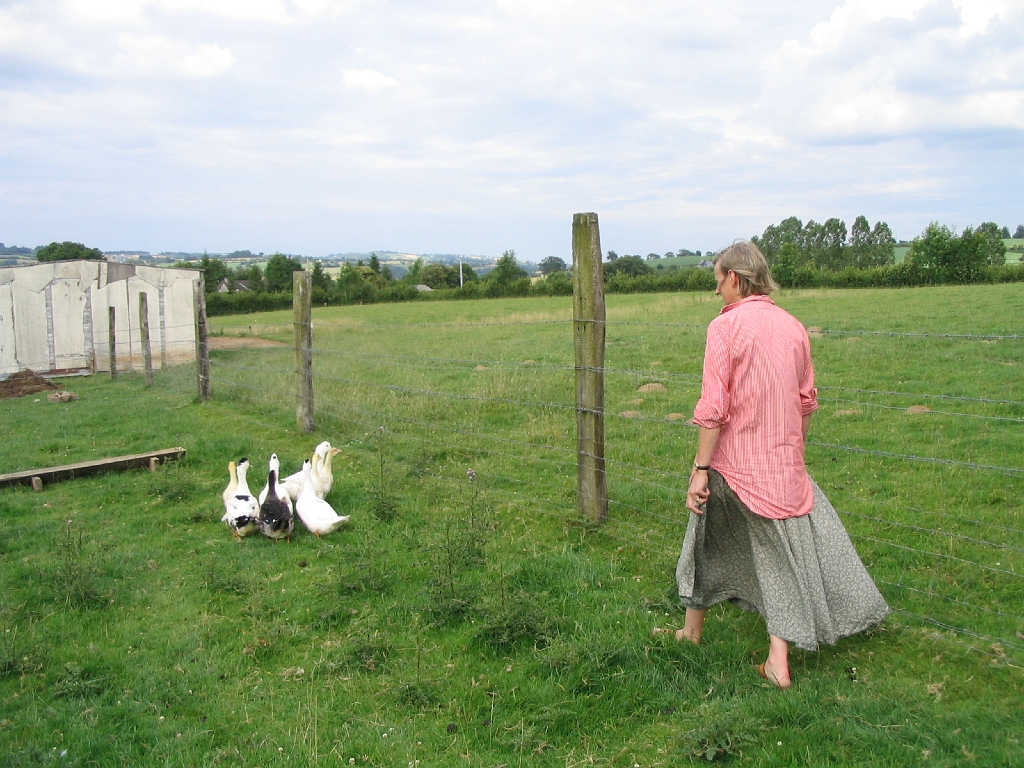 MORE SPACE, LESS MESS: One of the objections to keeping poultry is the mess that birds can create. However, this is only true if the birds have a restricted area in which to live. We have found that up to 15 or 20 birds with free-range access to about half a hectare of land leave virtually no trace behind them apart from the odd feather or two. But not everyone has access to so much land. Nevertheless, it seems to be true that there is less mess if one can achieve a good balance between numbers and free-range space.
MORE SPACE, LESS MESS: One of the objections to keeping poultry is the mess that birds can create. However, this is only true if the birds have a restricted area in which to live. We have found that up to 15 or 20 birds with free-range access to about half a hectare of land leave virtually no trace behind them apart from the odd feather or two. But not everyone has access to so much land. Nevertheless, it seems to be true that there is less mess if one can achieve a good balance between numbers and free-range space.
-
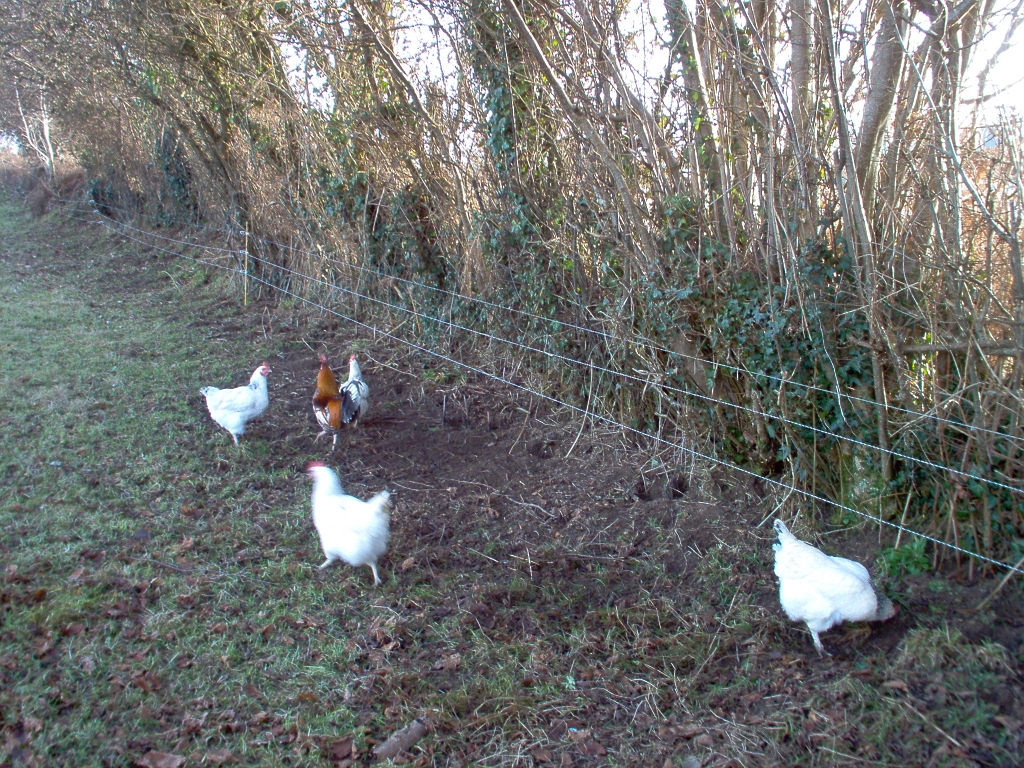 ELECTRIC FENCES: Although feathers seem to insulate poultry from electric currents to some extent, it also seems that chickens, ducks, geese and guinea-fowl all have a healthy respect for a 10,000 volt electric fence. Our fences were set up to keep our sheep within bounds, but they work just as well for poultry. Each fence consists of three strands, about 20cm apart, starting about 10-15cm from the ground. It is particularly important to keep ducks in their place. Ducks seem to head downhill whenever possible, probably because instinctively (and quite correctly) they know that if you go far enough down any hill you're likely to find a stream or a pond. The problem is that, unlike wild mallard, domesticated ducks can no longer fly and so easily fall prey to foxes, polecats and even birds of prey. Furthermore, they often stay out too late and forget how to find their way home. Many an ex-duck went wandering downhill for a swim...
ELECTRIC FENCES: Although feathers seem to insulate poultry from electric currents to some extent, it also seems that chickens, ducks, geese and guinea-fowl all have a healthy respect for a 10,000 volt electric fence. Our fences were set up to keep our sheep within bounds, but they work just as well for poultry. Each fence consists of three strands, about 20cm apart, starting about 10-15cm from the ground. It is particularly important to keep ducks in their place. Ducks seem to head downhill whenever possible, probably because instinctively (and quite correctly) they know that if you go far enough down any hill you're likely to find a stream or a pond. The problem is that, unlike wild mallard, domesticated ducks can no longer fly and so easily fall prey to foxes, polecats and even birds of prey. Furthermore, they often stay out too late and forget how to find their way home. Many an ex-duck went wandering downhill for a swim...
-
 MONSIEUR FOX: No one appreciates the meaning of security better than someone who has discovered what a fox can do. The mutilated corpses of an entire hen house littering the ground, some still half alive and feebly flapping their wings, is a heart-breaking sight. You should assume that if Mr Fox cannot get through your fence, he will try climbing in over the top or tunneling through underneath. We have a wooden chicken shed door which is visited by a fox almost every night. Each night he scratches a little at the foot of the door and every year the small hole he is creating gets just a little bigger. It may not get big enough in his own lifetime but the investment in effort will probably pay off for his son or grandson. Foxes are intelligent, crafty and capable of strategic thinking, as any experienced huntsman will tell you.
MONSIEUR FOX: No one appreciates the meaning of security better than someone who has discovered what a fox can do. The mutilated corpses of an entire hen house littering the ground, some still half alive and feebly flapping their wings, is a heart-breaking sight. You should assume that if Mr Fox cannot get through your fence, he will try climbing in over the top or tunneling through underneath. We have a wooden chicken shed door which is visited by a fox almost every night. Each night he scratches a little at the foot of the door and every year the small hole he is creating gets just a little bigger. It may not get big enough in his own lifetime but the investment in effort will probably pay off for his son or grandson. Foxes are intelligent, crafty and capable of strategic thinking, as any experienced huntsman will tell you.
-
 MADAME FOUINE: Meanwhile, here in Normandy, we have another canny predator, the fouine (the european Beach Marten: Martes foina) whose nearest relative in the UK is the Pine Marten. Fouines are great stealers of eggs and killers of poultry. They have a nasty habit of going for the head, sucking the blood and leaving the carcass which they usually find too heavy to move. This nocturnal killer has learnt to live in proximity to man because man provides so many opportunities for the fouine. They often climb trees to get access to attics or hay lofts in rural properties where they eat what they've caught and sleep it off. Owing to their extreme agility they can often find small gaps into a poultry shed that are otherwise fox-proof. So, where there are fouines, or martens, poultry owners should be very wary. Fortunately there are commercially available sprays which are designed to drive off cats and dogs. The same odour repels the fouine too. The only snag is that ducks are one of the three or four species of bird with a sense of smell and it appears that they (though not chickens) may be repelled by the smell too.
MADAME FOUINE: Meanwhile, here in Normandy, we have another canny predator, the fouine (the european Beach Marten: Martes foina) whose nearest relative in the UK is the Pine Marten. Fouines are great stealers of eggs and killers of poultry. They have a nasty habit of going for the head, sucking the blood and leaving the carcass which they usually find too heavy to move. This nocturnal killer has learnt to live in proximity to man because man provides so many opportunities for the fouine. They often climb trees to get access to attics or hay lofts in rural properties where they eat what they've caught and sleep it off. Owing to their extreme agility they can often find small gaps into a poultry shed that are otherwise fox-proof. So, where there are fouines, or martens, poultry owners should be very wary. Fortunately there are commercially available sprays which are designed to drive off cats and dogs. The same odour repels the fouine too. The only snag is that ducks are one of the three or four species of bird with a sense of smell and it appears that they (though not chickens) may be repelled by the smell too.
See Random early pictures of poultry at Le Bosquet
© (2013) Christopher A. Long. Copyright, Syndication & All Rights Reserved Worldwide.
The text and graphical content of this and linked documents are the copyright of their author and or creator and site designer, Christopher Long, unless otherwise stated. No publication, reproduction or exploitation of this material may be made in any form prior to clear written agreement of terms with the author or his agents.
















